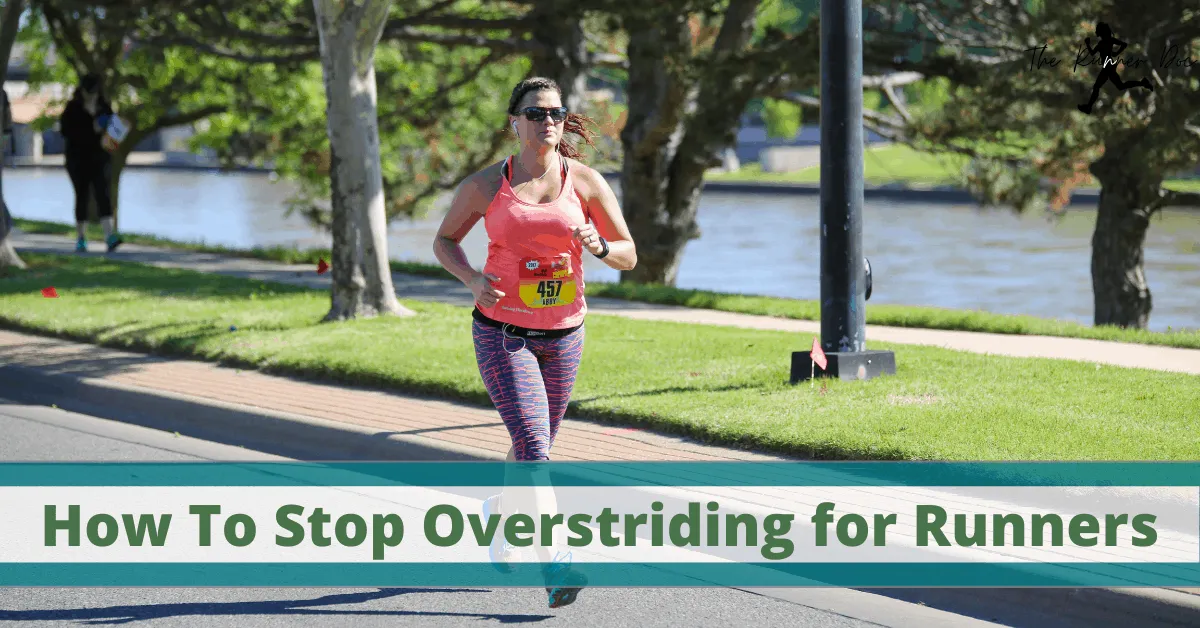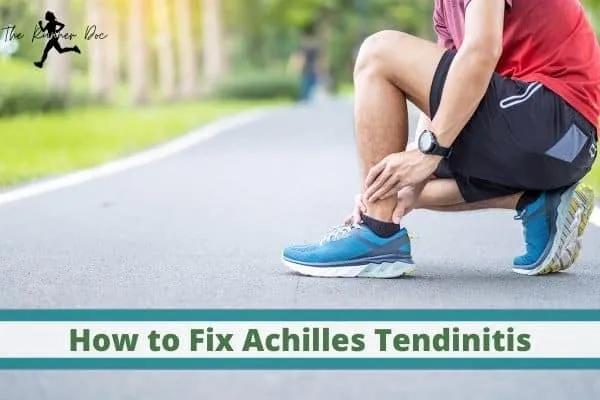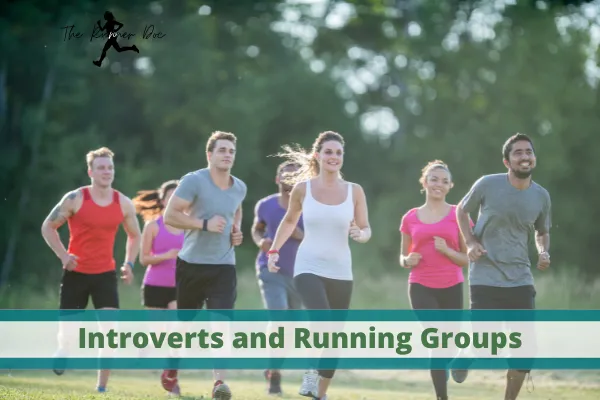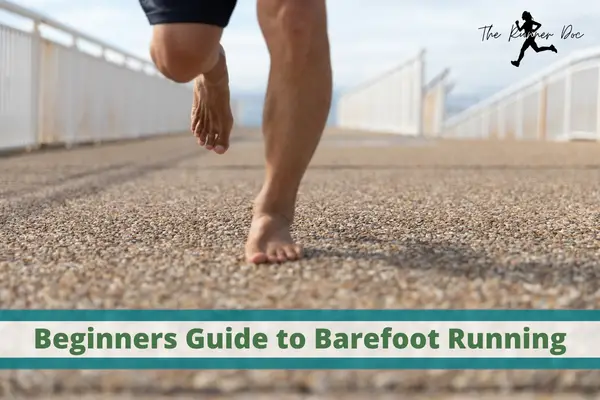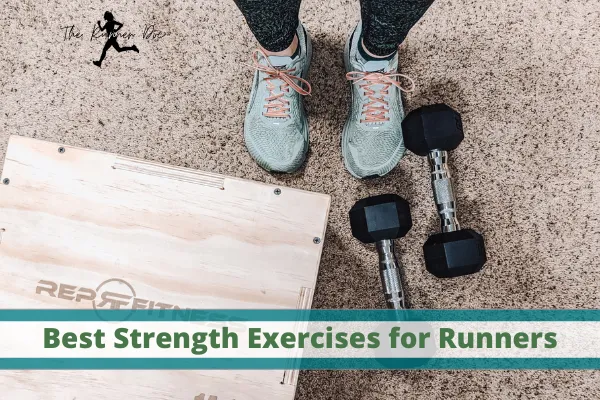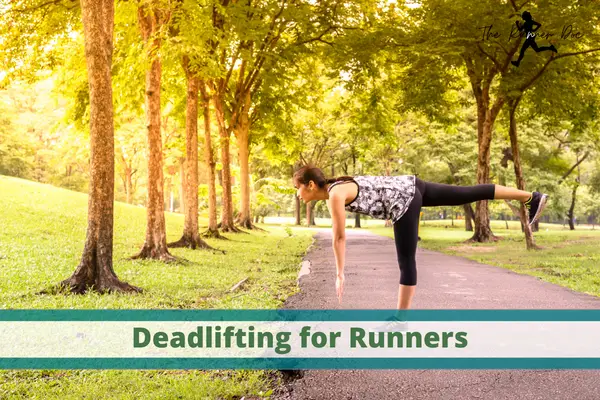How to Stop Overstriding When Running
I have no butt. It is something that I have said and struggled with for years. I also have been bad about overstriding (something I’m working on) when running. Okay, great Dr. Abby, but what do those two things have in common? A lot actually.
Overstriding when running is extremely common and it the major reason why is that runners don’t know how to use their butts. Look-y there, flat butts and running is connected!!
What is Overstriding?
Overstriding is when your leading leg/foot lands too far in front of your center of mass (your hips). By doing this, you are breaking each time you take a step in running. In case you weren’t 100% sure, this is the opposite of what you want to do when you are running. This is reaching for the ground and pulling it to you instead of pushing the ground away from you type of movement. This phenomenon in overstriding is called the breaking impulse during running in a study by Souza 2015.
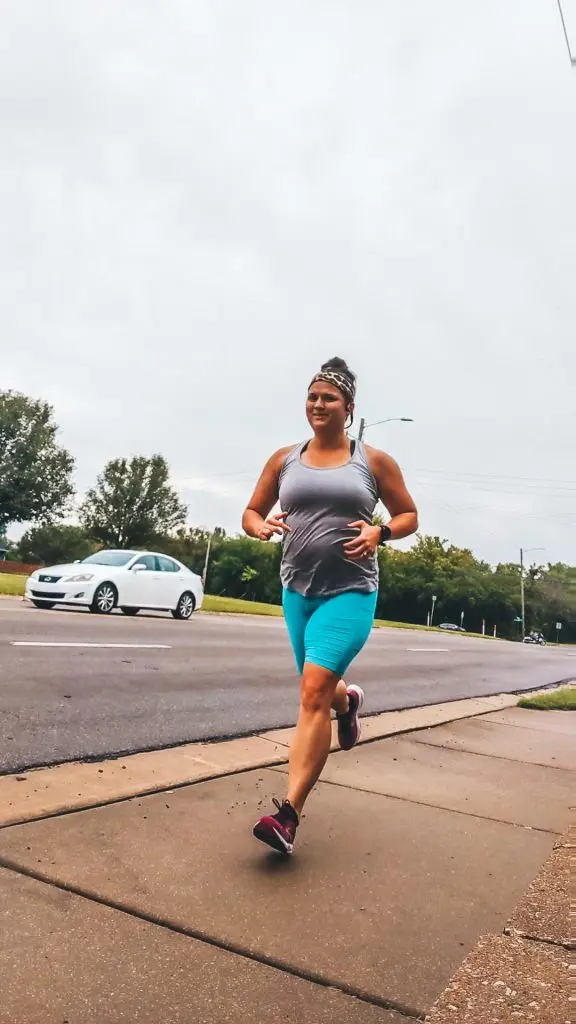
Typically, using a side video and a still image from that we would use a vertical line drawn from the lateral malleolus (outside bony part of ankle) and go up. If the line falls in front of the pelvis/hips on the runner it is overstriding. A good stride would have the line falling within the area of the pelvis.
Is Overstriding Bad for Runners?
I don’t like to normally name anything inherently good or bad when it comes to form etc. So while overstriding isn’t bad per se, there are some disadvantages to it.
Oftentimes, overstriding is linked to poor running performance and increased injury risk. Let’s break this apart a little bit. Poor running performance is a result of overstriding because you are doing the breaking with your front leg instead of propelling yourself forward. While you are overstriding some of the energy that you would typically and ideally use to propel yourself forward is actually being used to push backwards.
Next is the increased injury risk with overstriding while running. When you are performing this “breaking” motion you are increasing the amount of force that goes through your body. You hit hard with your heel with a straight knee which in turn increases impact and force. Increased force repetitively is rarely good for your body and is a common way to cause overuse injuries.
How Do I Know if I am Overstriding When Running?
The best way is to get a full gait analysis. I’m not talking about going to your local running store here. A good running coach or a physical therapist can provide this for you. In fact, stick around and in the future I hope to add that to this site!
If you can’t get a gait analysis from someone or don’t want to spend the $$ on a full analysis you can also do a quick check by yourself. Have someone video you while you are running from the side. Then, slow it down or freeze the frame when your foot strikes the ground and see where it is in relation to your hips. If you look at the picture of me from above it is pretty obvious that I am overstriding.
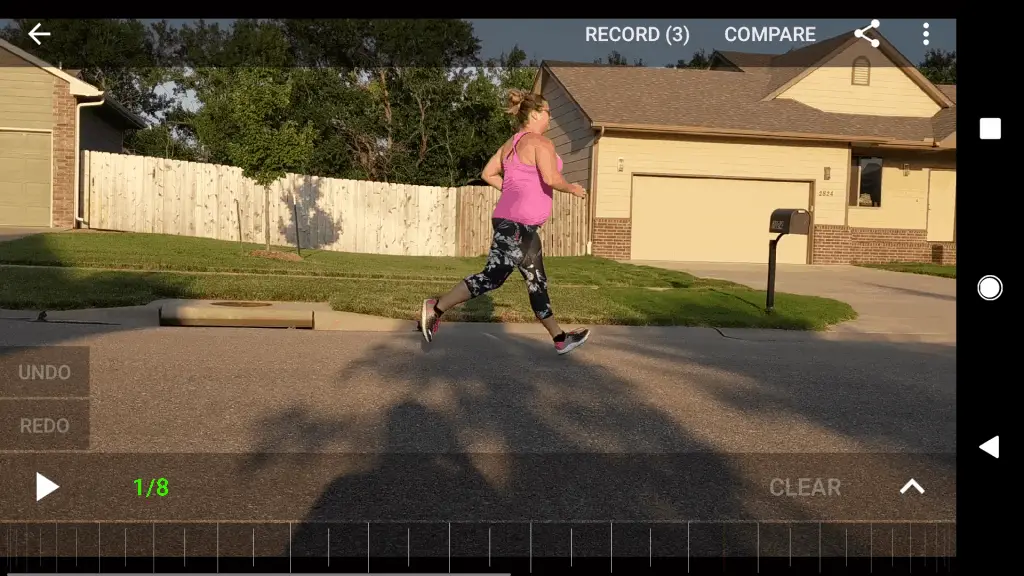
What Causes Overstriding When Running?
Remember when I said I don’t have a butt? Let’s circle back to this topic. It is common for most runners to say that running caused them to lose their butt OR prevent them from growing one. I’m sure you have said this yourself or you know someone that has said it before, right?
The main reason behind this trend? Most runners don’t know how to activate and fully use their gluteals. This leads them to become quad heavy and glute light in their musculature. Two of the easiest ways to inhibit muscles, especially in the hips, are improper posture and having tight hips which will limit the amount of hip extension you can get.
What is Wrong with being Quad Heavy?
Technically speaking, being quad heavy is actually called quad dependence. The question is, why is that a bad thing? Quads are needed for good powerful running right? Well yes, but they aren’t the only thing that is needed. In fact, there are 4 big reasons that being quad dependent isn’t so great.
1. It is can be horrible for your knees. When you overstride there is an increase of the mechanical load on the knee. This results in increase work for the quad and causing more shear force through the patella that is basically a pulley for the quad over the knee.
2. Your quads are fast-twitch fiber dominant. This means that with endurance running they will fatigue faster and cause you to hit the wall much faster if they don’t have assist from the slow-twitch fibers of the glutes.
3. Your quads just don’t have the base of support control that your glutes do. I’ve talked about how I consider the glutes part of your core and assist with stability for the whole body when running. If they are weak, well you set yourself up for injury.
4. Finally, your glute max plays a huge role in postural control. While this is related to point 3 I felt it needed more explanation. If your glute max isn’t firing correctly, your torso will lean forward and cause you to overstride. Which is the whole point of this article.
How Do I Fix Overstriding When Running?
There are several drills out there and advice. One of the big pieces and overused pieces of advice is to increase your cadence. I have written an article about increasing your cadence and the benefits it has for improving speed. However, I think this advice falls short when it comes to overstriding. Why? Because simply increasing your cadence isn’t as easy as it sounds. Especially when you have other form issues going on such as overstriding.
Improve Your Glute Activation
I have three exercises that are my favorite for really activating the glutes. Others will have different ones and just know there are a whole crap-load of different ones out there that work great. These are just the best starting place in my opinion.
1. Farmer’s Carry
This is one of my favorite all around conditioning and strengthening exercises. Not just for runners but everyone.
- hold a dumbbell or kettlebell in one hand hanging down by your side
- keep your shoulder blades down and back
- hold yourself vertical by activating your core and walk for 30 seconds
- do 3-4 times per side
2. Single Leg Deadlift
- Hold a dumbbell or kettlebell in one hand while standing on the opposite leg
- Hinge your hips back while keeping your spine straight with an engaged core and lower the weight down towards your foot while lifting your back leg behind you
- Push your hips forward and tighten your glutes as you return to the upright position
- complete 3-4 sets of 8 reps on each side.
3. Single leg Glute Bridge
- lay on your back with your arms relaxed and feet hip-width apart resting on the ground with the knees bent up.
- lift one leg into the air keeping it parallel at the thigh with the other legf
- contracting your glutes and core, lift your hips from the ground keeping a neutral spine
- slowly lower to the starting position
- complete 3-4 sets of 10 reps on each side
Running Drills
I have a favorite running drill to help with overstriding. I also have found that it can help with your running cadence as well.
To perform this drill you will start with running in place at the cadence that you currently run your easy-paced runs. Just get close, it doesn’t have to be perfect. Get a feel for this cadence and the feel of not overstriding while running in place
Next, we want to start moving forward very, very slowly. You barely want to be moving here but continue with your natural cadence. If you start to overstride slow down or return to running in place.
Do this very slow place for a few seconds. Now, I want you to increase your speed a very tiny amount. To do this, I want you to lean forward from the hips very slightly. This does not mean slouch forward at the shoulders. Keep your spine neutral and hinge at the hips much like you do in the single leg deadlift.
Continue slowly increasing your speed until you reach your normal running speed. At this point you will stop and repeat starting from running in place. Do this drill 5 times during every run that you do for 3 weeks.
To track your progress take a video at the start and end of the 3 weeks. If you have fixed your overstriding during your runs then great! continue to do this drill once a week during a run to reinforce. If you still are struggling continue doing it every run.
A Note on Heel Striking
If you notice I mentioned overstriding causes a forceful heel strike and the increased forces that overstriding cause through the body. I didn’t ever say that a Heel strike caused issues. This is a completely different topic that I’m going to be covering soon!
Keep Running!
AFFILIATE DISCLOSURE
As an Amazon Associate, I earn from qualifying purchases. This post may contain affiliate links. If you use these links to buy something we may earn a commission. The Site may contain links to affiliate websites, and we receive an affiliate commission for any purchases made by you on the affiliate website using such links.
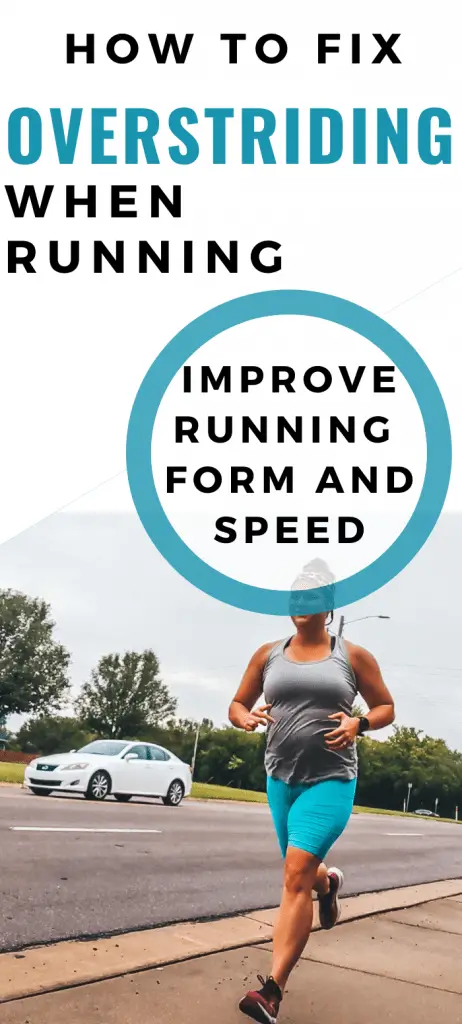
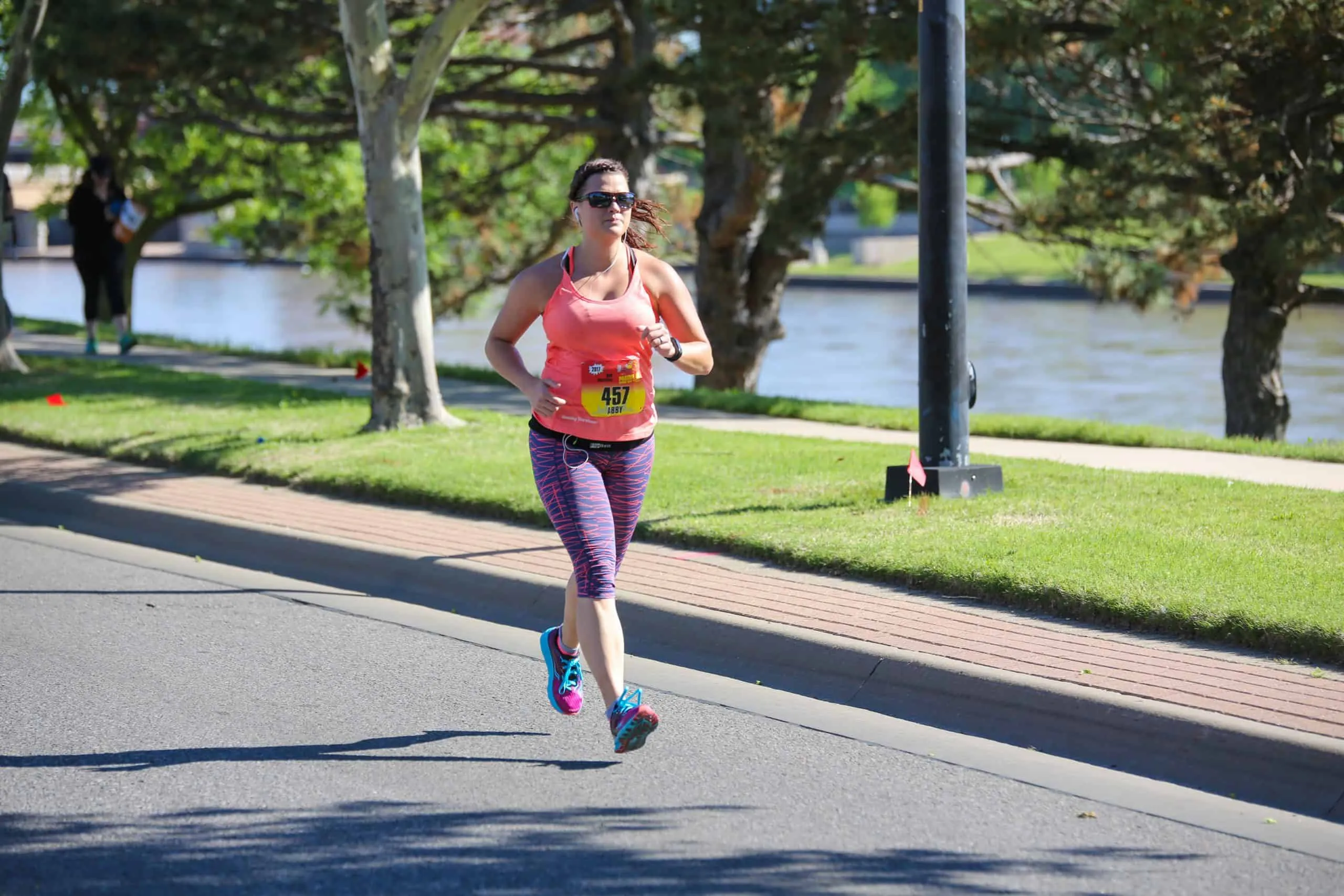
Dr. Abby Siler, PT, DPT is a Physical Therapist with 10 years of experience in a variety of settings. She has spent the majority of her time treating athletes in orthopedic clinics and worker’s compensation cases. She is a runner herself for the past 15 years and a lifelong athlete. Dr. Abby loves to teach runners how to stay injury free and out of her clinic.
